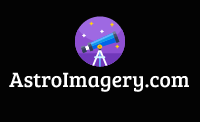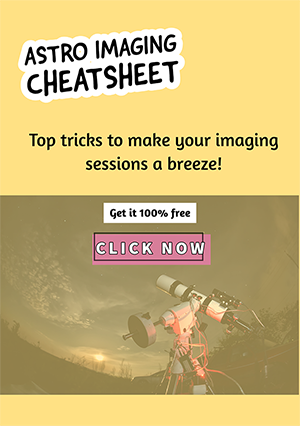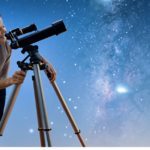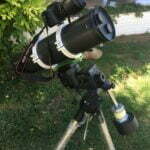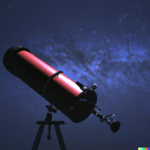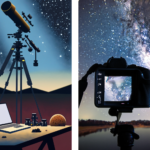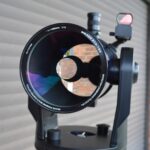Table of Contents
Astrophotography has many different faces. You may choose to shoot the Milky Way against a suitable backdrop; you may choose to photograph nebulae or galaxies with a camera and an astrophotography lens; or you might shoot the planets or moon just using your camera. Any of these will require a good-quality astrophotography lens that will enable you to take the best possible astrophotos. On this page, we will look at the best lens for astrophotography.
The type of target, the level of light pollution in your area, and your budget all play a role in determining the best lens for astrophotography. Small and distant targets require a telephoto lens of at least 350mm and, for widefield astrophotography, a lens between 17mm and 150mm.
As we look deeper into this question, we will consider how your target, location, and budget affect your choice of the best lens for astrophotography. You will also begin to understand what features you will need in any good astrophotography lens. What follows is based on my experience using different lenses with a DSLR camera to shoot both Milky Way and Deep Sky Objects.
Before we move on, here is my guide to the best DSLR cameras for astrophotography – check them out!
How to Choose the Best Lens for Astrophotography
When I wanted to use a lens specifically for taking astronomy pictures, I first decided what I wanted to photograph. My first choice was to try to photograph the Milky Way with the camera I already had, a Canon 600D. I knew that this would require a widefield lens, and all I had was a lens that adjusted between 17 and 85mm that came with my camera. So, I used this lens.
At first, I didn’t know which setting to use exactly, so I experimented, but basically, I used the low setting of 17mm for the Milky Way and the upper level of 85mm for deep sky objects. What kind of results did I get? Check out some of my photos below to find out.
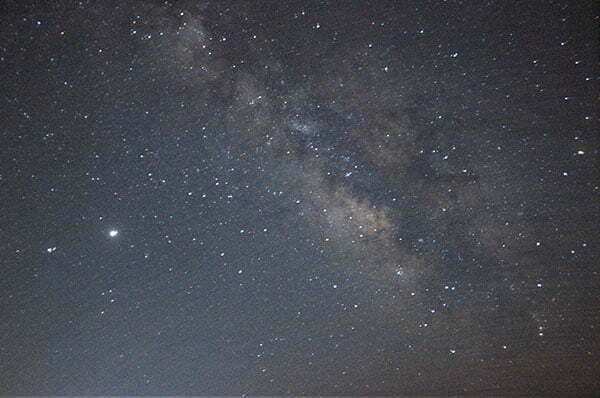
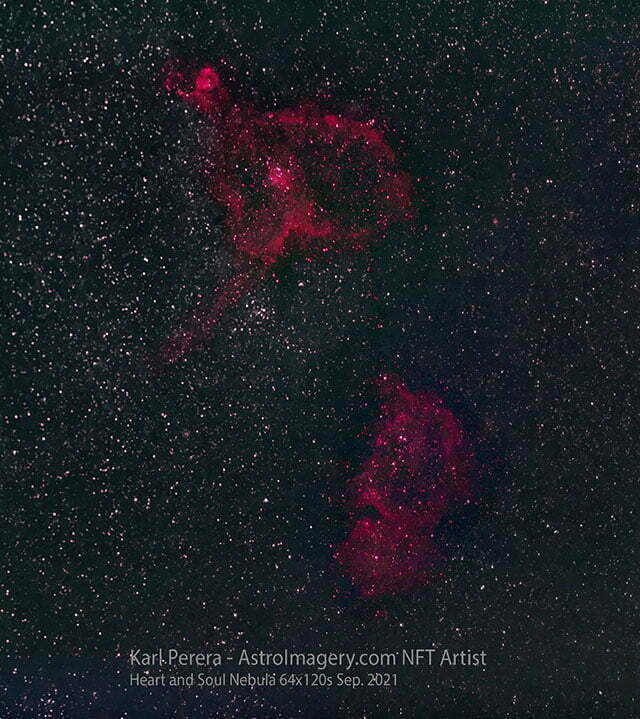
Now looking at these two photographs, I think the processing and my imaging techniques were still in their early days, and I know my photos would be better now if I reprocessed them, but still, you can see a lack of real detail and clarity in both pictures. Why?
The lens I used has a low setting of F4.0, which means this is not the best lens for astrophotography as it lets in less light than other lenses. We’ll discuss more about this F number in the next section and why it matters so much for any lens you use while taking photos of the night sky. There are a number of other problems with this lens, which I will also point out in this article, and hopefully this will help you choose a good-quality lens that will help you take excellent astrophotos.
Here’s an affordable astrophotography lens I recommend you try for wide-field astro:
What makes a Good Lens For Astrophotography?
There are some of the features of the best lens for astrophotography. They include these:
- A low F-number preferably below 3
- The field of view of the lens in mm.
- Possibility to adjust the F-number
- Fine focus control
- Ability to photograph stars with no halo
- Reputable manufacturer
Let’s take a look more closely at each of these above features and try to understand what they are and why they are important for nighttime photography.
F-Stop or F-Number of an Astrophotography Lens
What you need to know about the F-number of a lens and how it affects your astrophotography is that it indicates how much light will pass through the lens and reach the sensor of your camera. For low-light photography, we need as much light as we can get from the distant and dim objects in the dark night sky. Therefore, a good astrophotography lens should have a low F-stop.
If you’re looking to buy the best lens for astrophotography, you should consider a lens of 3 or lower as a good guide. Anything higher will block out valuable light and require longer exposures. In general, lenses with very low f-numbers, such as 1.2 or 1.8, are much more expensive. Those in the range of 2–3 are cheaper but can still give great results. To learn more about F-stop click on this link.
Field of View
When we are trying to compose a shot and frame it we need to consider the field of view of the optics we are using. My telescope has a field of view of approximately 650mm when I use my Canon DSLR at prime focus (this means I do not attach a lens to the camera but the telescope acts as the lens).
The field of view allows you to understand what your image will look like of any target in the night sky. For example, comparing my telescope’s field of view to that of a 300mm lens means that my telescope will have twice the magnification of the 300mm lens. In other words, the lens will see about twice as much sky as the telescope in the same image taken with the camera. The lower the lens FOV in mm, the wider its field of view. This is why when photographing a panorama of the sky including the Milky Way we need to use a lens of 17-30mm or so to get the widest view possible.
A telephoto lens of 600mm or more can actually replace a telescope when attached to a camera; however, a high-quality telephoto lens capable of being used in astrophotography will probably be more expensive than a telescope. This is why, rather than buying an expensive astrophotography lens, many, including myself, prefer to use a telescope for closer views of deep-sky objects.
According to Schedler (in Ratledge (Ed.), 2005), a lens between 20 and 300mm should be sufficient to photograph nearly all of the deep sky objects in the sky.
Can you adjust the F-Stop?
It is very helpful to be able to adjust the F-stop and the reason is that sky conditions change and your target may be brighter or fainter. By adjusting the f-stop to a higher level, we can cut out light coming from light pollution or a bright moon. By using a lower setting, we can let more light in and shorten the exposure time. For the moment, I see no reason to use lenses lower than about 2.8, which is the best I have because I can always increase exposure time in darker locations. It is not worth the cost of having a lower-focal lens just to save exposure time, but this is my choice.
Some lenses do not allow you to adjust the f-number, and this is a factor to consider when choosing an astrophotography lens.
Fine Focus Control
Focus is an extremely important thing in astrophotography. Once or twice I spent all night imaging only to find upon closer inspection that my stars were out of focus ever so slightly. I had to throw away all those photos and that experience has made me check and double-check my focus before starting.
The best lens for astrophotography would include fine control, such as that on my Samyang 135mm. It allows me to fine-tune the focus, and it doesn’t drift in the night. Other lenses I have tried need to be taped into position so the focus doesn’t move during the night.
Never trust the infinity setting on your lens, always check on something far away or better, on a bright star. Never get a lens if you are not sure the focus is reliable.
How Good are the Stars?
Some lenses add a halo around the stars. Sometimes I have seen a red halo around stars and one of my lenses even was unable to shoot crisp stars. This makes focusing very difficult and also can ruin your images.
It’s a good idea where possible to ask others about a certain lens, perhaps visit and ask in a forum or try the lens before buying it.
Who is the Manufacturer?
Most lenses are manufactured by Canon or Nikon and these are recommended brands for obvious reasons. Check out this post I’ve written – which is better Canon or Nikon? Don’t forget, if service is necessary at some point, it is best to have a well-known manufacturer’s lens.
Lens Compatibility
The compatibility of astrophotography lenses depends on the camera body and what you need your lens to do.
The kind of astrophotography you choose will also dictate which lens would be a good fit. For example, Milky Way astrophotography is compatible with wide-angle lenses. Deep sky photography will require a good quality telephoto lens between 85 and 300mm and maybe as much as 500-1000mm for smaller objects.
Lens adapters can be used with lenses designed for a different camera body and in some cases, lenses from different manufacturers can be used either with or without adapters.
The reason why we may have problems with the compatibility of lenses is that each lens is designed to fit a particular camera body.
A lens has a mount that attaches the lens to the camera body. Different manufacturers use different mounts and different models from the same manufacturer may use different lens mounts. Therefore, some lenses may be incompatible with your camera so always check this before buying a lens.
Chances are that you will be committed to buying a lens from a certain manufacturer because of the camera you are using. Different manufacturers’ lenses are rarely compatible.
As mentioned above, it is important to know what kind of mount your camera has and whether the lens you want to buy is compatible or not. If not, it will not fit your camera.
For example, Canon lenses are usually compatible with EF or EF-S mounts. Nikon lenses use an F mount and Sony uses an A and E mount. You cannot interchange these lenses and you need to match the lens you want to the model of camera you have. Check the different types of camera lens mounts.
In some cases, lenses from different manufacturers may be compatible but more often than not, this is not the case. So please check carefully before you buy a new lens for your camera.
The Lenses I Have Used and My Results
I have three lenses I use for astrophotography. They are as follows:
- Canon Zoom Lens EF 16-35mm Ultrasonic F2.8
- Canon EFS 24mm F2.8 STM
- Samyang 135mm F2.0
I use the two Canon Lenses for widefield shots and Milky Way. I use the Samyang for mainly deep sky objects. I have had success with all of these lenses, and as you can see, they all have F-stop lower than 3. The advantage of such lenses is that they are not only suitable for astrophotography but can be used for general photography also.
So what kind of results have I had with these lenses?
I took the Canon Zoom Lens EF 16-35mm Ultrasonic F2.8 to Bali and took a series of images of the Orion nebula and the Horsehead Nebula. As I didn’t have a tracker or telescope mount, I used a normal camera tripod and took 5-second sub-exposures. Over two nights I got a total of 450 photos and stacked them together to get a wonderful widefield shot of these famous nebulae. The result was very pleasing!
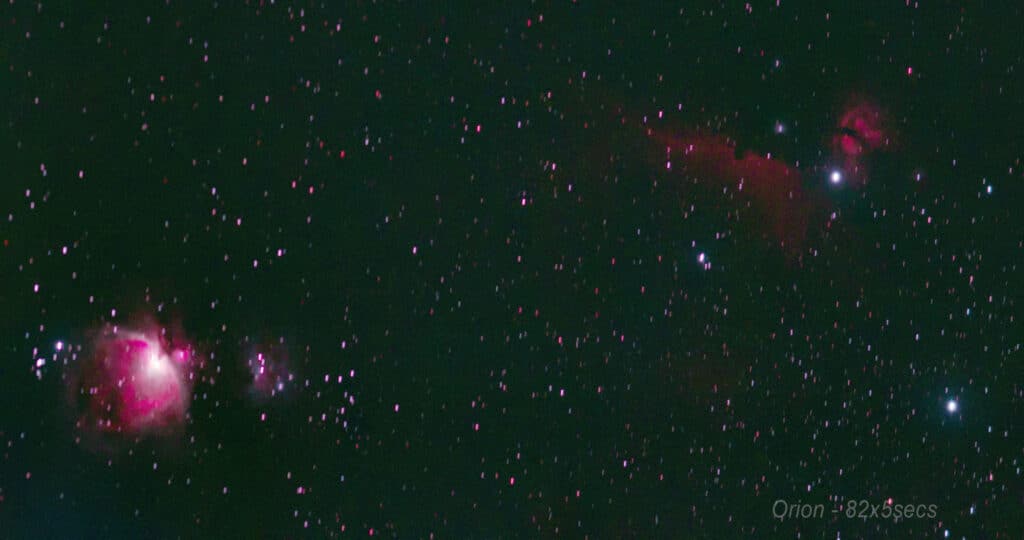
You can see in this image that even when taken at an exposure of just 5 seconds the stars are elongated. I was quite surprised at this.
Nevertheless, I was quite happy with this image. What do you think?
I have also taken a number of shots with my Samyang 135mm. These shots include a great image of the Pleides which I include here. The dust associated with this star cluster showed up really well but Pleides was quite small in the field of view.

One thing I think you can see here if you look closely is the red halo around the stars. With a perfect focus, this might have been less but this is what I see with this lens. I don’t think it is a problem, do you?
Also, it is possible to remove such a halo from stars in your post-processing so that this should not be a problem in your final image.
Overall, I think this is a great image, and I really like this lens. It may be the best lens for astrophotography in its price range. It is extremely popular in the astrophotography community.
I would recommend this 135mm lens if you’re looking for something to photograph deep-sky objects at this scale. It also gave me incredible close-up shots of the Milky Way, which was interesting.
Affordable Lenses for Astrophotography
In this section, I will discuss choices of affordable astrophotography lenses recommended by some of the experts I follow online, and I will also give my opinion on one camera that I use myself.
What do I mean by affordable? I mean value for money. Everybody’s budget is different, but I would say that to me, affordable means hundreds of dollars rather than thousands. Thousands would seem out of range for most of us.
So now let’s consider some of the most affordable astrophotography lenses, starting with the one I use.
- Samyang 14mm F2.8: affordable, good performance
What lenses do the experts recommend?
The first astrophotography expert I’ve chosen is Alyn Wallace, who mainly shoots Milky Way shots with landscapes. He recommends the use of Sony lenses, especially the following:
The best Sony lens for astronomy:
- The Sony G Master F1.8, at the same price, has half the weight and better performance. Also fantastic for photographing star trails.
- Sony 24mm F1.4 G Master: lets lots of light in and takes great pictures. This is one of Alyn’s favourite lenses (according to his YouTube channel).
Delta Astronomy, via their YouTube channel, recommends these lenses as high quality yet very affordable:
- Rokinon Samyang 14mm F2.8 (many lenses from Rokinon are also available with the Samyang brand, but they are identical).
- Rokinon 24mm F1.4 – at this f-stop this lens will let lots of light in!
- Tamron 150-650mm – not the best but reasonably priced, sharp stars, and good colours. At the top end, this is similar to a telescope with a field of view of 650mm.
Trevor Jones, from AstroBackyard.com, is one of my favourite YouTubers in this field. I really respect his views and opinions. He recommends the following as his candidates as the best lens for astrophotography:
- Samyang Rokinon 135mm F2.0 – so good and affordable. I can also vouch for this lens as I have it and love it too!
The best Canon lens for astrophotography is…
CameraGurus, popular on YouTube for their professional photographic reviews, recommends the following lenses:
- Canon EF/M 22mm F2.0 STM—it has no chromatic aberration.
- Canon EF 50mm F1.8 STM: clear and sharper images and stars.
- Canon EF 16-35mm F4 – amazing images of space!
Astrophotography Lens Reviews
Here I’ve collected some information from comments and reviews about which astrophotography lenses are the best. I start with what I found on Cloudynights Forum.
First let’s look at reviews for different categories of astrophotography lenses such as wide-angle, beginner DSLR lenses, full-frame lenses, and best telephoto lenses.
Wide-angle lens
The first lens to be mentioned here is the Samyang 14mm f2.8.
Some of the comments made in the Cloudynights forum are:
- affordable
- cheap
- Best value astro lens
Beginner DSLR lens
We’ve said it before but the Samyang/ Rokinon 135mm F2.0 is a great lens and that’s why I use it. Many recommend this lens as suitable for beginners.
Conclusion
Depending on what kind of astrophotography targets you plan to photograph, the three lenses I have are reasonably good, and I do recommend them. However, there are many choices that also depend on how much money you want to spend on a lens. I wouldn’t advise any beginner or inexperienced photographer to waste lots of money on a camera lens that is too advanced, even if it is the best lens for astrophotography; this will not help you improve. So, how can you start doing astrophotography cheaply? – Click to find out.
I prefer to use a telescope rather than buy an expensive telephoto lens, however, one advantage of using a lens is that it is so much more portable. I can’t really transport my telescope equipment with me on my travels but a camera, lens, and tripod can go anywhere with no risk of damage.
It is so handy to just be able to pick up a camera and tripod and use a good lens to shoot on the go. As we have seen, you need to give some thought to your choice of lens before buying. In other words, the question “what is the best lens for astrophotography?” is not easy to answer. You don’t want to be disappointed by the results after spending a big chunk of change!
References
Covington, M.A. (2018). Digital SLR Astrophotgraphy. Cambridge University Press. Link to Book Description.
Ratledge, D. (Ed.). (2005). Digital Astrophotography. Patrick Moore’s Practical Astronomy Series. Springer. Link
